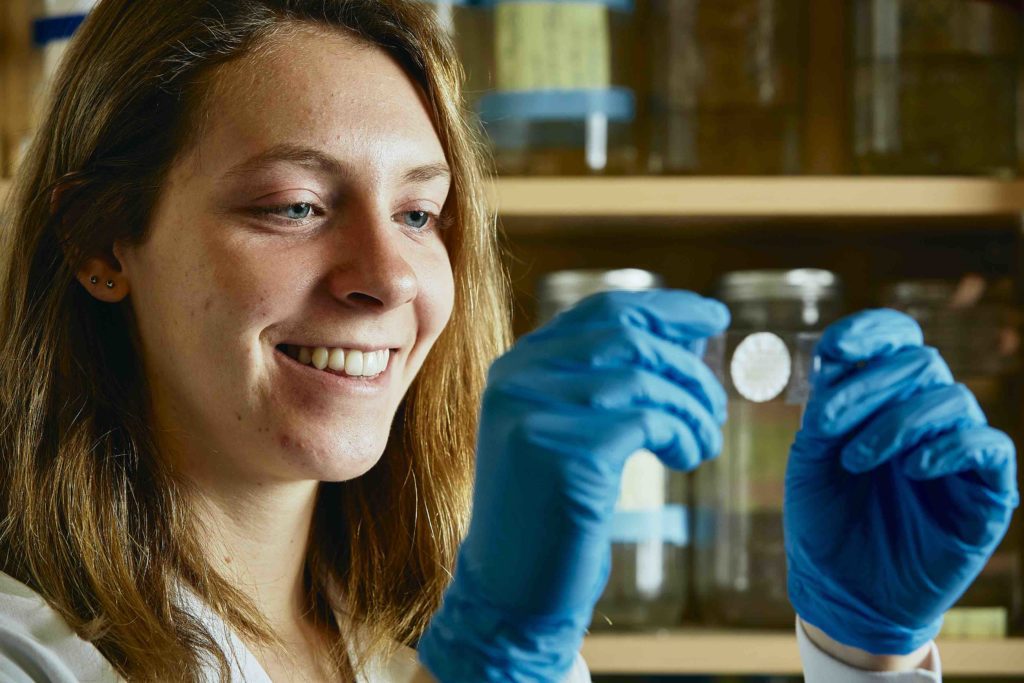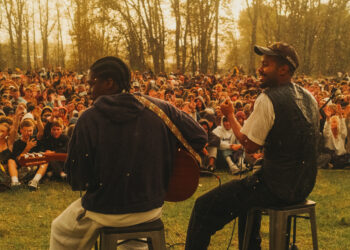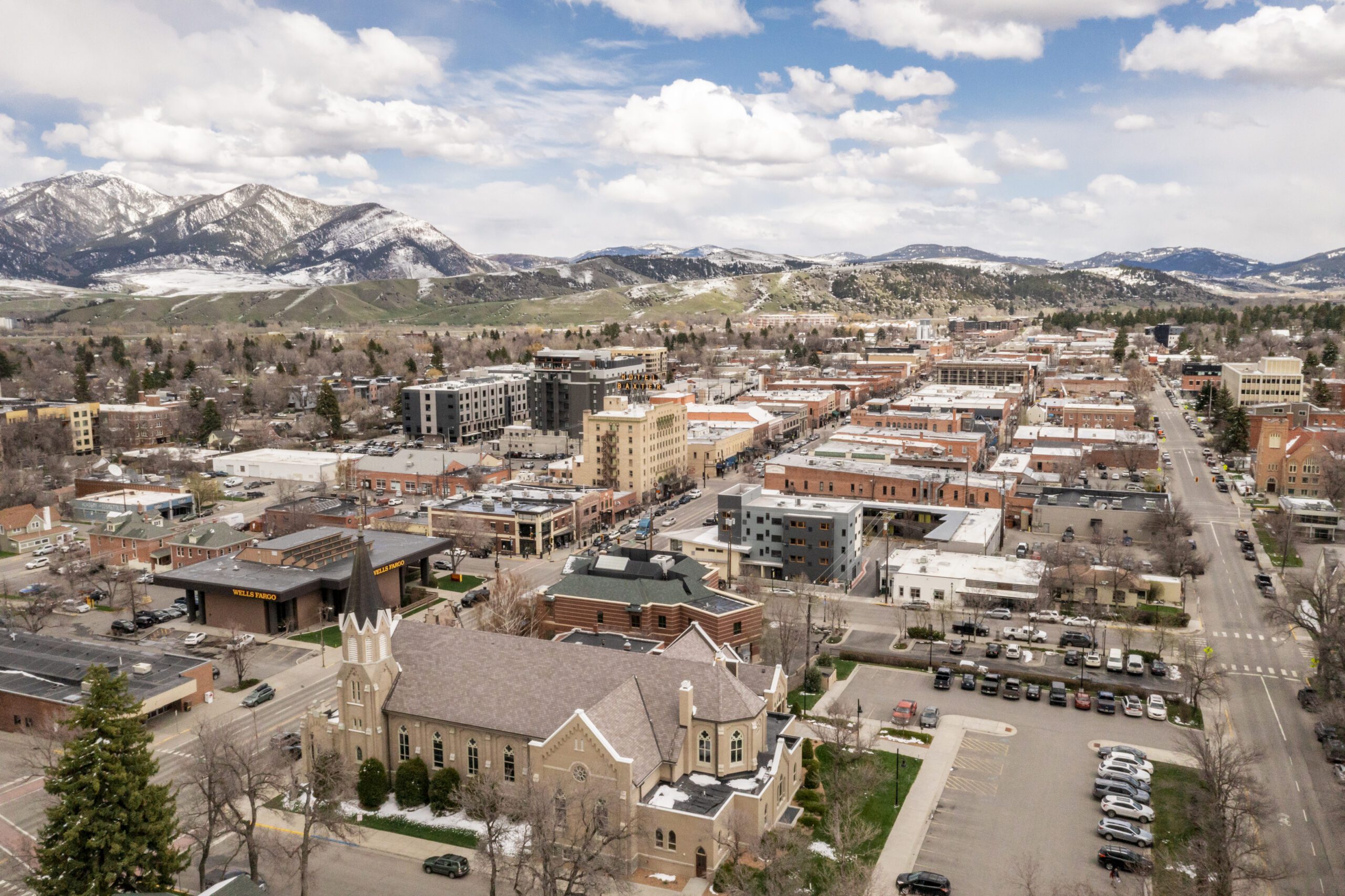By Marshall Swearingen MSU NEWS SERVICE
BOZEMAN – A mountain meadow glittering with fresh snow may seem a picture of purity, but for Bekah Anderson, a Montana State University senior majoring in chemical engineering, the picture is more complicated.
Working with dozens of snow samples taken over the past year from Big Sky Resort, Teton Pass and other Rocky Mountain sites, Anderson uses microscopes and other specialized laboratory tools in MSU’s Center for Biofilm Engineering to peer into the world of tiny particles that mix with airborne water that then falls from the sky as precipitation.
“There’s all sorts of stuff in there,” including plant pollen and dust, Anderson said, but of greatest interest to her are fibers of polyester and other pieces of microplastic.
“All the pieces I’ve found so far have been small fibers that seem to be from fabrics like fleece,” Anderson said, noting that many kinds of outdoor clothing are made of finely spun plastic fibers. “We think that’s because they’re fine enough to get whisked up into the atmosphere.”
Previously, scientists have documented the presence of microplastic in streams and other water bodies, but the MSU study is among the first to examine the man-made particles directly in precipitation, according to the project’s leader, Christine Foreman, associate professor in the Department of Chemical and Biological Engineering in MSU’s Norm Asbjornson College of Engineering.
“It’s been exciting, but also saddening, to find so much microplastic in snow,” Foreman said. The team’s preliminary results are significant because they suggest the synthetic fibers are prevalent throughout the water cycle and not just in certain waterways.

Microplastics are “an emerging concern,” Foreman said. Not much is known about how they affect ecosystems, but it’s reasonable to suspect the petrochemical particles are, for example, being consumed by some aquatic organisms, she said. Scientists have warned that microplastics have a number of impacts on insects and fish, including clogging up digestion and disrupting hormones that regulate body functions.
In the lab, Anderson passes each sample of melted snow, as well as rain, through a fine filter that collects any particles. Then she applies a dye that binds to plastic. A certain kind of light applied under the microscope causes the dye to fluoresce, making any microplastic stand out. Using another technique called Raman spectroscopy, which measures how light interacts with a material’s molecular composition, Anderson can determine what kind of plastic each particle is made of.
“I’m passionate about it,” said Anderson, who is from Golden, Colorado. “It’s important for us to understand the consequences of our plastic use.”
When she presented early results from the project last March at the Western Regional Honors Conference, which brought top students from across the western U.S. to MSU to present their research, Anderson won the award for the best poster presentation.
“She’s incredibly motivated,” Foreman said of Anderson. “You can tell she’s really excited about this project, and she brings that excitement to the rest of our research group,” which focuses on studying microbes in glacial environments.
Anderson, whose work in Foreman’s lab is funded by MSU’s Undergraduate Scholars Program, also presented at the 2019 National Conference on Undergraduate Research in Kennesaw, Georgia. When MSU hosts the event on March 26-28, more than 4,000 students from around the world are expected to convene on the Bozeman campus to share their research.
Anderson said she “definitely” recommends attending NCUR. “I loved being around other students who were so passionate about their projects.”
“Research has a strong community,” she said. “It brings people together.”














